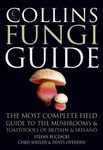![Biology of Microfungi Biology of Microfungi]()
Click to have a closer look
About this book
Contents
Customer reviews
Biography
Related titles
About this book
Biology of Microfungi book includes 24 chapters written by a group of experts in the different fields of microfungi and cover a broad range of topics on microfungi. It provides the most updated information on the latest development in systematics and taxonomy of microfungi, new techniques which were developed in the last ten years and their application in microfungal research. After the International Code of Nomenclature for algae, fungi, and plants (Melbourne Code) was adopted by the Eighteenth International Botanical Congress Melbourne, Australia, July 2011, it has had a profound impact on mycology and its research. Fungal nomenclature changes and its significance to fungal taxonomy and naming of microfungi in the future is discussed in detail. Since dual names system for fungi developing both sexual and asexual states, and fungi developing only asexual state is no longer available, the first five chapters will clarify some confusion and provides perspective views on the direction for future research. The next nine chapters cover microfungi and their ecological roles or functions in the different habitats (air, indoor, aquatic, marine, plants, soils, etc). The remaining 13 chapters cover the relationship of microfungi and humans (good and bad) and usage or application microfungi in different industries, such as food, agriculture, forestry, green technology, pharmaceutics, and medicine, as well as in our daily life. Biology of Microfungi bridges the gap between basic mycological research and applied mycology and provide readers a unique set of information and knowledge of microfungi generated from multiple angles in different fields of mycology.
Contents
Preface
1. Introduction -advances and predicament
2. Recent changes in fungal nomenclature and their impact on naming of microfungi
3. Future perspectives and challenges of fungal systematics in the age of big data
4. Molecular techniques in mycological studies and sequence data curating: quality control and challenges
5. Challenges and future perspectives in the systematics of Kickxellomycotina, Mortierellomycotina, Mucoromycotina, and Zoopagomycotina
6. Entomophthoromycota: a new overview of some of the oldest terrestrial fungi
7. Latest developments in the research of rust fungi and their allies (Pucciniomycotina)
8. Conidiogenesis: its evolutionary aspects in the context of a philosophy of opportunity (lectics)
9. Fungal diversity of Central and South America
10. Mesofungi
11. Evolution of fungi and update on ethnomycology
12. Phylogenetic diversity of fungi in the sea including the Opisthosporidia
13. Biology and ecology of freshwater fungi
14. Dispersal strategies of microfungi
15. Microfungi in indoor environments: what is known and what is not?
16. Biology of the whiskey fungus
17. Allergenic microfungi and human health: a review on exposure, sensitization, and sequencing allergenic proteins
18. What's old is new: Recognition of new fungal pathogens in the era of phylogenetics and changing taxonomy and implications for medical mycology
19. Mycotoxins in food and feed: a challenge for the 21st century
20. Inhalation exposure and toxic effects of mycotoxins
21. Fungi in fermentation and biotransformation systems
22. Microfungi in biofuel and bioenergy research
23. Interactions of microfungi and plant parasitic nematodes
24. Pathogenic microfungi associated with Spartina in salt marshes
Index
Customer Reviews
Biography
Dr. De-Wei Li is a leading scholar in microbiology related to fungi and a is lecturer at Yale University.






































